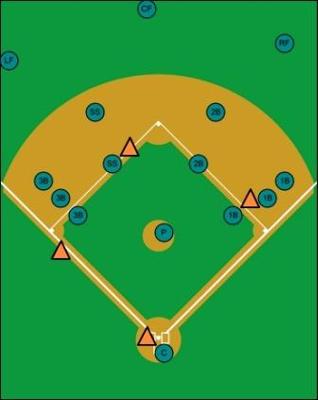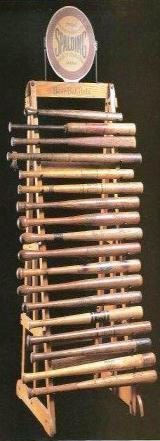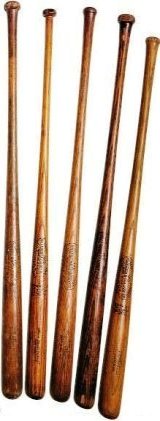Position for the defense with one out and bases are loaded.

Positioning possibilities for infielders
Anonymous asked: Position for the defense with one out and bases are loaded?
Rick answered: Thank you for your question.
Where the infielders are set up is determined by the game situation at that moment.
Factors to consider are:
1. Inning
2. Score
3. Ahead or behind
4. Are you having trouble scoring runs, or have you been able to score easily up to that point
As you look at the diagram above, the shortstop and second baseman essentially have two options:
a. On the grass, which would mean they are coming to the plate on a ground ball hit to them. That positioning would be based on the coaches belief that you cannot afford to give up any additional runs. Most often that alignment would come in the later innings of a game; but could be used earlier if it looked like your ability to score runs would be at a premium.
b. Double play depth: Willing to concede a run at this point for the possibility of getting out of the jam with a double play, or at worst a force on the lead runner in trade for the run from third.
Third baseman and first baseman: In the diagram they essentially have 3 options.
1. On the grass, in which case they are coming to the plate on a ground ball, with the hope of turning a 5-2-3 DP, or a 3-2-3 DP to get out of the inning. At worst, getting the second out of the inning at home plate without giving up a run. With two outs, they are able to back up and work towards the force available at any base for the third out.
2. Even with the bag for the 3B, "back pocket" of the runner for the first baseman.
From this position both fielders have the option to go to the plate if the ball is hit sharp and directly at them. If not, they can go to second and work the DP from there, or if they are close to their respective bases, step on their base and throw to first from 3B, or throw to second base for the first baseman.( The first baseman needs to yell "tag" to the shortstop covering at second, as he has taken the force out of the play at second, when he stepped on first to begin this sequence.)
3. Play back and go where the ball takes you. Conceding the run here is already established, so both infielders are looking to turn 2 at second base, unless the ground ball you get takes you to your respective base, in which case they need to take that out and throw to the most likely second option based on how much time they have.
Players need to have the knowledge of what to do and when in these situations. Thinking ahead and putting themselves in the correct position for the situation is an essential skill, just as important as the ability to field and throw the ball.
Time spent in practice working on game situations makes it all come to life for them in a game. Live situations off a fungo provides situational recognition in an environment where you have the ability to stop and talk about what went right, and what went wrong.
Through repetitions, players learn to sort through the options available in their mind before the pitch is made, get into the proper positioning for what is needed and react to the ball when it is hit.
Yours in baseball,
Rick
Click here to post comments
Join in and write your own page! It's easy to do. How? Simply click here to return to Ask The Baseball Coach.
|





